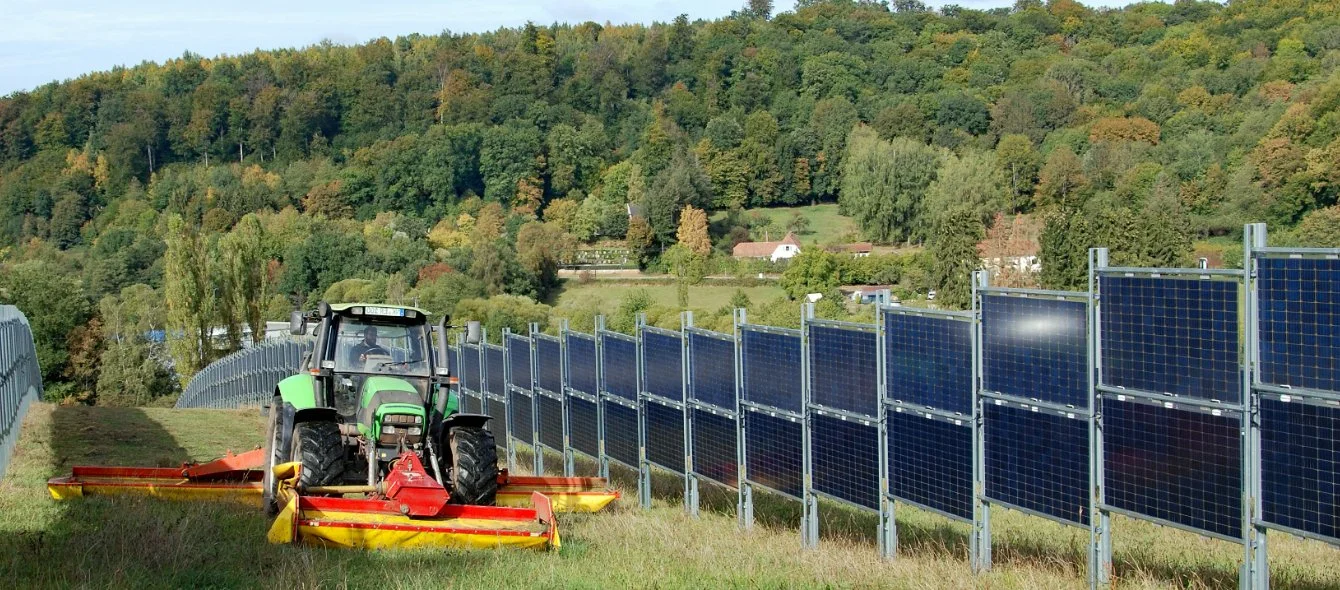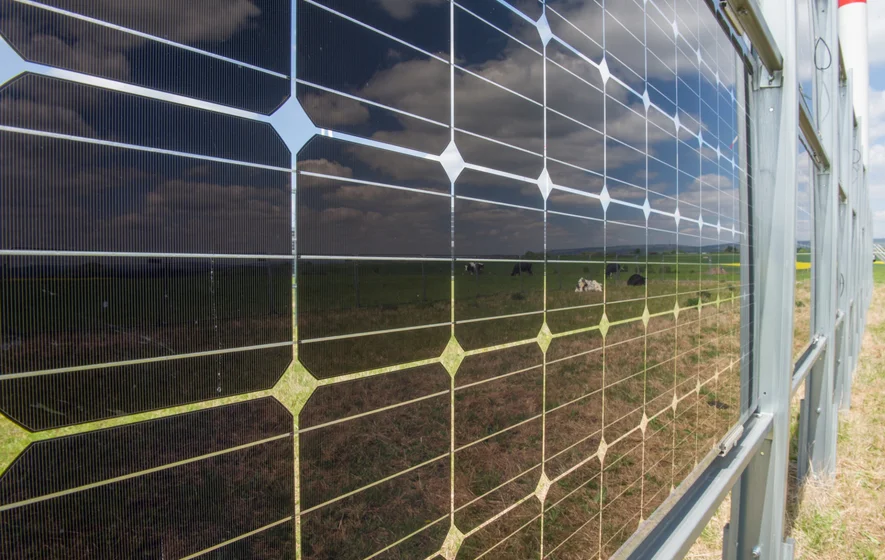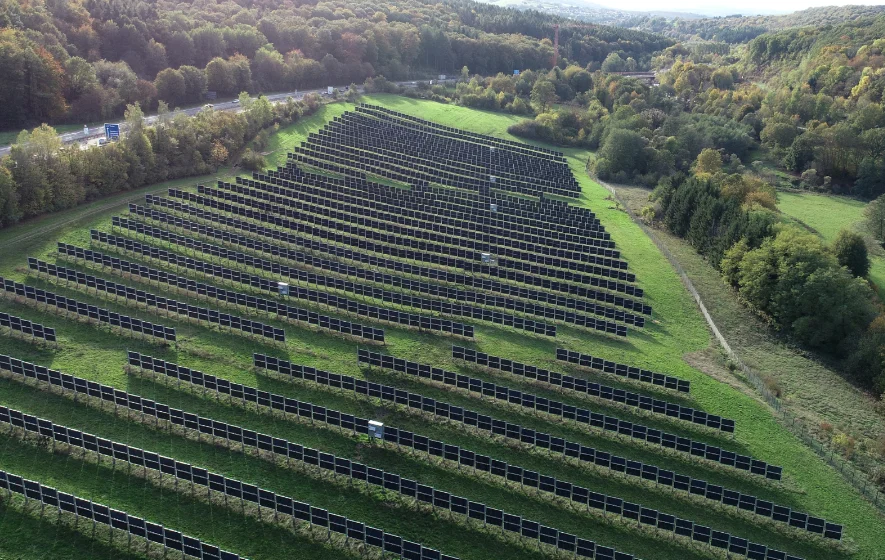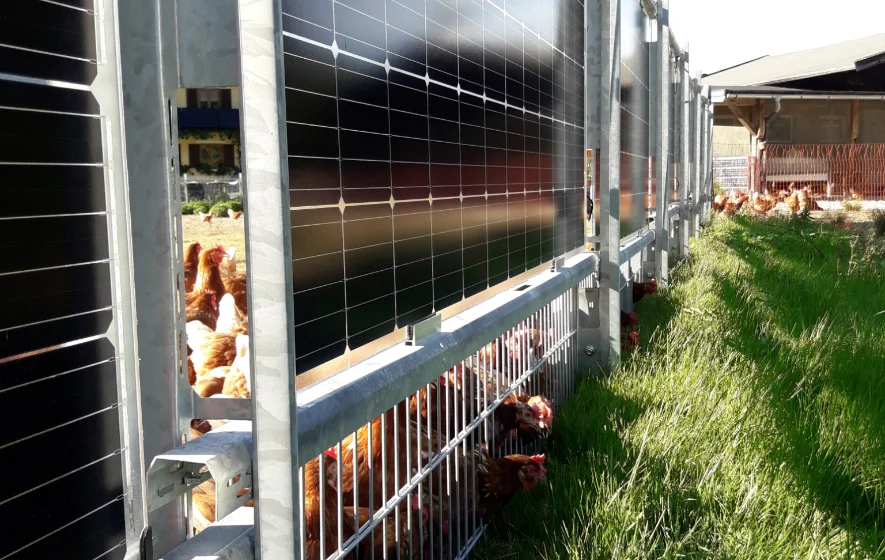It isn’t the first time that space technology is applied on earth. Solar cells were used in space travel as early as the 1960s. The Vanguard I satellite, which was launched into space by the USA in March 1958, was the first to be equipped with photovoltaic (PV) modules. They charged the satellite’s batteries, enabling it to transmit signals to the earth for more than six years. It took decades for the technology to prevail in this field. In the meantime, solar cells capable of capturing sun beams not only on their front but also on their back faces were already being used in outer space. These ‘bifacial’ or double-sided cells promised to increase power production.
Manufacturers developed such products for solar panels in terrestrial applications a couple of years ago. Based on a report by the US research and advisory group Wooden Mackenzie (WoodMac), double-sided PV panels with a total capacity of 8.2 GW were installed worldwide by the end of 2019, most of which in China. This accounts for a mere 1.5 percent of the 586 GW in global PV capacity.
Cells capture sunbeams on both sides
The concept is based on a simple idea: The modules have a glass pane not only on the front but also on the back, with the solar cells being located between them. “This means that the front looks identical to the back,” says Radovan Kopecek, physicist at the International Solar Research Centre (ISC) in Constance, a centre for solar engineering.
This enables the cells to capture light on both sides. Besides capturing direct sunbeams, they also capture indirect beams that are reflected from the ground, enabling them to generate more electricity than the monofacial PV panels that are used most of the time.
Bifacial panels, the space savers
Moreover, this technology opens the door to new applications. For instance, the modules can be mounted horizontally, vertically or transversely. “Bifaciality is interesting above all in desert regions where there is a lot of reflection from the sand. However, systems with a vertical setup, enabling the use of two surfaces, are suited to the European market as well,” Kopecek declares.
In such applications, the modules are mounted, for example, on fields in a manner that enables the continued agricultural use of the land. They are oriented to the east and west. As a result, light is incident on the cells in both the morning and evening. The first projects of this nature are already underway, including some in Germany. The Next2Sun startup built Europe’s largest bifacial solar farm in Eppelborn in Saarland in 2018. It consists of 5,700 panels spread over ten hectares, capable of producing a total of up to two MW of electricity. They are arranged in rows spaced apart enough for tractors to drive between them and harvest crops such as forage. However, double-sided modules are also suitable for flat roofs, carports as well as house and noise-abatement walls.
Yield remains difficult to gauge
Just how much more power these panels produce is still being determined. A team from the Fraunhofer Institute for Solar Energy Systems (ISE) is developing a method to measure yield from both sides of the cell. Initial tests show that, in Germany, bifacial modules could generate 5 to 15 percent more electricity than monofacial variants.
“The problem with bifaciality is that its benefits cannot be measured as easily as for monofacial applications, because two sides have to be analysed instead of one,” explains Max Mittag, Head of the Simulation Team. This involves considering a number of factors. “Just imagine optimising a car for driving forwards and backwards at the same time. It remains a car, but many issues have to be re-evaluated from the ground up.”
Module yield varies from one model to the next. It also depends on a number of other factors. Besides the angle at which they are mounted, the surroundings are also decisive. To ensure the highest possible incidence of light on the solar cells, what is known as the ‘Albedo factor’ must be as high as possible. This factor indicates the ground’s reflexion potential. For example, dry asphalt achieves ratios of up to 0.15. In other words, it reflects 15 percent of the beam. Red shingles have a rating of 30 percent. White surfaces have a reflection potential of over 80 percent. “A light-coloured flat roof has a higher yield than black roofing felt, and light-green grass performs better than dark-green grass in a solar farm,” declares Max Mittag.
Manufacturers employ modern technologies
Most manufacturers also draw on PERC technology. This enables the modules to produce electricity in diffuse light in the early morning and late evening. It involves applying a special coating that reflects the weaker, reddish light so that it becomes incident upon the solar cells.
Solar module producer LONGi Solar joined forces with the US Renewable Energy Test Center to test bifacial PV modules using PERC technology. This revealed that the yield of these panels is up to 20 percent higher, thanks to their back side. Another advantage is that the performance of the front side is optimised further. In most models, it is slightly lower than in the monofacial variants. “But, even in the worst case, the bifacial gains should more than compensate for this drawback,” says Max Mittag.
Steady drop in module prices
One reason for the decline is that the cost of these modules is barely higher than that of single-sided ones. However, when put on the market, they require between 10 and 30 percent more investment, depending on the plant and manufacturer. This is because additional steps have to be taken to produce them. For instance, the back sides of the modules have to be polished as well. In addition, production capacity was initially geared towards monofacial modules.
However, as bifacial modules have steadily fallen in price since 2016, according to ISC physicist and industry expert Radovan Kopecek, they are now a mere one to two percent more expensive than single-sided variants. WoodMac experts expect that PV costs will drop by nearly 25 percent in the next five years. They believe that this will drive down the cost of converting solar energy to electricity even further. Since 2010, it has declined from 25 to 3.5 US cents. The advent of bifacial farms could accelerate the cost reduction.
This is why experts in the International Technology Roadmap for Photovoltaic (ITRPV) Network predict that the sector will post significant growth. According to their forecast, double-sided cells will become much more widespread in the years ahead. They envisage such cells accounting for about 60 percent of the world market by 2027, outclassing monofacial cells. Kopecek is convinced that “the future belongs to bifaciality.”



